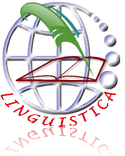SPEECH FUNCTION IN FEATURE STORIES IN READER™S DIGEST
DOI:
https://doi.org/10.24114/jalu.v1i1.378Abstract
This study is aimed to find out the dominant type and to explain the meaning of the Speech Functions used in Feature Stories of Reader™s Digest Magazines; The Council of Dads, Blind Optimism, and Where Children Sleep. The data were analyzed based on the 4 types of Speech Function suggested by Halliday (1994). The result shows that the most dominant type of Speech Function used in Reader™s Digest™ Feature Stories was statement which is realized by declarative mood. This indicate that the writer in order to deliver the ˜human interest™ to the readers, entertain the readers, describing the news hook to the reader, to narrated in a chronological the stories for the readers are by using Statements. Key words: Speech functions, feature stories.Downloads
Published
2012-04-01
Issue
Section
Articles
License
Copyright (c) 2012 Arta Rosaen, Lidiman Sinaga

This work is licensed under a Creative Commons Attribution-ShareAlike 4.0 International License.
Authors who publish with this journal agree to the following terms:
- Authors retain copyright and grant the journal the right of first publication with the work simultaneously licensed under a Creative Commons Attribution License that allows others to share the work with an acknowledgment of the work's authorship and initial publication in this journal.
- Authors are able to enter into separate, additional contractual arrangements for the non-exclusive distribution of the journal's published version of the work (e.g., post it to an institutional repository or publish it in a book), with an acknowledgment of its initial publication in this journal.
- Authors are permitted and encouraged to post their work online (e.g., in institutional repositories or on their website) prior to and during the submission process, as it can lead to productive exchanges, as well as earlier and greater citation of published work (See The Effect of Open Access).
- This work is licensed under a Creative Commons Attribution-ShareAlike 4.0 International License.

